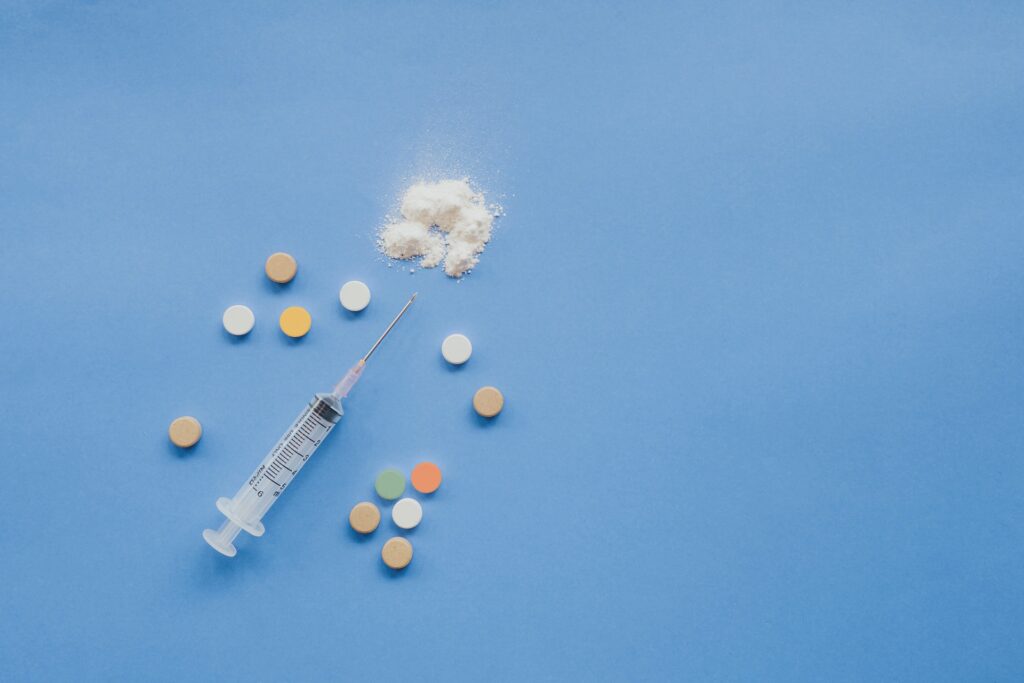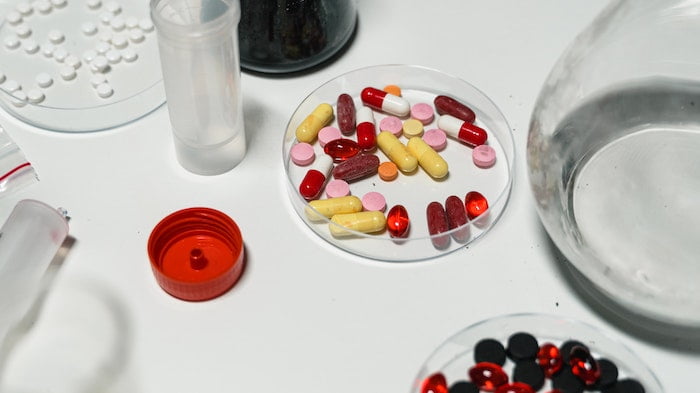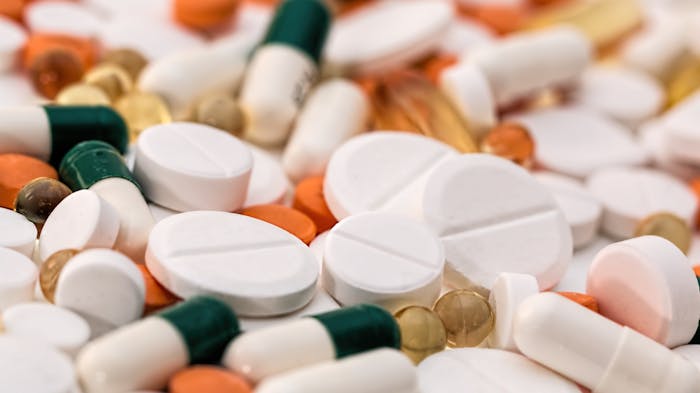Drug Mixing & Commonly Mixed Substances
Drug mixing is a common practice for individuals looking to achieve intense highs from substance use.
Mixing is also a sign of addiction, with a number of risks being posed to those who do it regularly and without supervision.
In order to properly understand drug mixing and its dangers, individuals can identify those substances that are most commonly mixed together, the different types of drug mixing, the reasons why people mix drugs, and the ways risks can be minimised.
Which drugs are most commonly mixed?

Drug mixing can involve a broad range of substances, but individuals will often mix certain substances together. These combinations can include:
- Alcohol and cannabis
- Alcohol and ecstasy
- Alcohol and cocaine
- Alcohol and Adderall
- Alcohol and Valium
- Alcohol and codeine
- Alcohol and LSD
- Amphetamines and benzodiazepines
- Heroin and Fentanyl
- Xanax and Valium
Another common form of mixing is the combination of recreational drugs – such as alcohol or cannabis – with prescription medications.
What are the different types of drug mixing?
While mixing drugs involves the combination of two different substances at its basic level, there are actually different forms of mixing which depend on the types of drugs used.
Individuals who mix drugs from the same group can have different experiences to those who mix different types of drugs
1. Mixing within drug groups
When combining two different substances from the same drug group, individuals will experience a multiplying effect whereby the united impacts of the two drugs heighten the effects produced.
For example, when an individual takes two different stimulants, they will experience a greater rush of energy. These drugs activate the nervous system and produce a rush of stimulation, and together result in a more intense and energy-fuelled high.
However, the dangers of this kind of mixing relate to the overwhelming strength of these effects. Individuals who combine stimulants are at risk of overstimulating their body, triggering effects such as high blood pressure and overdose.
2. Mixing across drug groups
When combining drugs from different groups, individuals experience a high resulting from the contrasting effects that each drug is simultaneously having on the body.
For example, an individual who mixes a stimulant with a depressant will feel the high of their body being both energised and slowed down.
Putting the body through this, however, applies strain and isn’t healthy. Individuals who mix in this way can experience breathing difficulties and a greater risk of overdose due to one drug masking the effects of the other and encouraging more consumption.
Why do people mix drugs?

Individuals will mix substances for a wide range of reasons, and understanding and breaking down these motivations can be integral to both challenging and stopping the practice.
1. Intensifying the effects of substance use
Combining substances enhances an individual’s high, intensifying the effects that they would expect to experience with just one drug so that they are more intense and last longer.
This high can be desired for a number of reasons, but many people will seek the recreation and thrill of drug mixing in order to have fun. If they are a risk taker, mixing drugs can provide an individual entertainment where single drug use cannot.
2. Lack of accessibility
In order to consume a drug regularly, individuals must be able to consistently access it in quantities that are sufficient for creating the high they look to attain. When this isn’t achievable, however, drug mixing can be seen as the solution.
If an individual hasn’t got access to drugs they usually use, or they have only a limited amount, mixing it with a more readily available substance (such as prescription medication) can be a way to consistently achieve desired highs.
Mixing can also be a method increasing the longevity of a drug stash. Alcohol, for example, can be used to make the consumption of smaller doses of a drug more intense, reducing the need to use so much of it with each session.
3. Tackling dependence
If an individual has concerns that their use of a recreational substance has turned into a dependence, they may begin using another substance which they believe to be less addictive in order to wean themselves to sobriety.
While this may seem like a responsible thing to do, these individuals are actually taking a greater risk, and in many cases are transferring their dependency on one substance onto another.
There are a number of substances that can be taken in order to treat physical dependence [1], but these must be taken at the prescription and under the supervision of addiction specialists. These medications are also never mixed with other drugs.
4. Mitigating the effects of a substance
Although combining substances usually intensifies the effects of drug use, some individuals can use different drugs as a means of pitting two different sets of effects against each other.
For example, individuals can use depressants in order to slow and steady the effects of a stimulant they have taken. This may seem logical, but it actually puts a lot of strain on the body and carries a variety of risks.
5. Increased tolerance
Someone who consumes a certain type of drug regularly can develop a tolerance for it whereby their body becomes so used to its effects that higher and higher doses are needed in order to attain the same high.
An alternative to increasing this dosage, however, can often be found in mixing drugs. Individuals can see it as a more economical way of achieving the high they seek.
What are the dangers of mixing drugs?
Even if an individual thinks that their drug mixing is a safer alternative to other forms of substance use, it is important to recognise the various dangers and risks that the practice poses.
1. Unwanted effects
Individuals who combine drugs may believe that they know exactly what effects they are going to feel, but this isn’t necessarily the case. A high may be more intense, but a number of other effects can also be triggered that are unexpected and undesired [2].
High blood pressure, anxiety, heart palpitations – effects can manifest which have not been experienced before and wouldn’t have arisen from single drug use.
2. Higher risk of overdose
The intense sensations brought on by mixing drugs can be so strong that the body becomes overwhelmed. If this occurs to the extent that the systems of the body become compromised, an individual will suffer an overdose.
When it comes to fatal overdoses, it is usually the combination of multiple drugs that is responsible [3].
There are so many ways that mixing increases overdose risk. With heroin and cocaine, for example, the cocaine causes the body to use more oxygen while heroin reduces the intake of oxygen, resulting in a deficiency that affects the entire body’s functionality.
3. Withdrawal
As an individual consumes a substance more regularly, their body and mind begin to develop a reliance for it. When combining substances, the same principle can apply with individuals learning to rely on this mixing in order to function.
Once a dependency develops, withdrawal is a resulting risk. Individuals can struggle to function without continuing their drug mixing, with strong cravings and a range of symptoms being triggered when they go without it.
Withdrawal as a result of mixing drugs can be especially challenging as complicated interactions between different substances can complicate and intensify the negative effects felt [4].
Prescription drugs: a particular concern

Individuals need to take significant caution when mixing recreational drugs with prescription medications. The fact that these substances are provided by a doctor may produce the misconception that they are safer to mix, but this isn’t so.
It is also worth acknowledging that individuals may not realise that they are drug mixing if they have become used to taking their prescription medication.
Mixing prescription drugs with alcohol – one of the most commonly consumed drugs in combination with medicines – can have a range of significantly dangerous effects. These include:
- Intense sedation which results from the combined drowsiness incurred by both medicine and alcohol. This can be both powerful and long-lasting, meaning individuals are unsafe to drive or complete tasks independently.
- Damage to important organs such as the liver. Many medicines are processed in the liver, and the consumption of alcohol on top of this can overwhelm the organ and cause it to fail.
- Breathing can become more difficult with the combined depressive effects of prescription drugs and alcohol. Respiratory depression can occur, triggering respiratory failure and dramatically increasing the risk of overdose.
- The ways in which alcohol and prescription drugs can impact judgement, coordination, and decision-making can leave individuals at high risk of accidents. This applies in particular to those who operate cars regularly.
How can the risks of mixing drugs be minimised?
The best way for individuals to protect themselves from the risks posed by drug mixing is to abstain from the practice altogether. Not mixing substances is the most effective way to prevent negative consequences from occurring.
If individuals do mix drugs, however, it is integral that they protect themselves as much as possible. A key part of this is ensuring that they consume these substances in a safe environment surrounded by people they trust to look out for them.
In the bigger picture, however, individuals need to remain vigilant of the risk of addiction. If a dependency develops, individuals will not only subject themselves to the risks of drug mixing in the long term, but they will also suffer from withdrawal.
1. Spotting the signs of addiction
If an individual uses multiple drugs at once on a regular basis, they need to remain observant of their behaviours and health. To the best of their ability, they need to look out for the signs that their consumption has become necessary instead of recreational.
The development of an addiction can be really tough to spot, however there are a number of areas where the condition can reveal itself. These include:
- Behaviour – When addiction develops, the dominance it holds over an individual’s life can seriously impact their actions and mood, triggering deception, paranoia, irritability, and intense emotional highs and lows.
- Physicality – With substance abuse becoming so central to day-to-day life, looking after the body loses importance. Poor hygiene and weight loss can be apparent, as can symptoms like bloodshot eyes and constricted pupils.
- Finances – Paying for a substance use disorder (especially one that relies on the mixing of two drugs) can be expensive. Individuals can therefore appear to have little money for other essential expenses, or they can often borrow or steal.
- Relationships – Prioritising substance misuse results in a lack of maintenance of personal relationships. Strain then results, manifesting as frequent fall outs or separations between relatives, friends and partners.
2. Tackling addiction effectively
Those who identify some of the signs of substance abuse will need to take the necessary steps in order to combat and overcome their condition. This isn’t an easy thing to do, but every route to recovery begins with making the decision to get better.
3. Talk to a medical professional
If drug mixing has spiralled into an addiction, talk to a doctor or GP about what symptoms you are experiencing and what your substance use entails.
Even though it can be difficult to open up about this, the medical professional will use this information to properly diagnose your addiction and point you in the right direction of suitable support and treatment.
4. Research and pursue treatment options
Once an addiction has developed, a doctor is likely to recommended rehab. This treatment sees individuals undergo detox and therapy in order to alleviate the physical and psychological dependence that has formed for multiple substance use.
In order to optimise the effectiveness of your recovery, look into local rehab centres and pursue the programme that seems most suitable. Different facilities offer unique perks and activities, so selecting the right rehab for you is really important.
5. Remain committed and consistent
Addiction rehab isn’t easy, but those who succeed and reestablish a life of sobriety are those who stick with treatment and put in consistent effort over time.
Once a rehab programme has commenced, dedicate your entire focus to it. Limiting distractions and focusing on each day as it comes will optimise the receptivity of recovery principles and increase the chances of making long-term change.
6. Construct a support network
Outside of organised treatment, successful recovery relies on having a foundation of people you can rely on for emotional and practical support.
Creating this network relies on open communication when it comes to what addiction is, how it is being combatted, and how it can be helped going forward.
References
[1] https://www.ncbi.nlm.nih.gov/pmc/articles/PMC3767185/
[2] https://nida.nih.gov/videos/what-happens-when-drugs-are-combined




